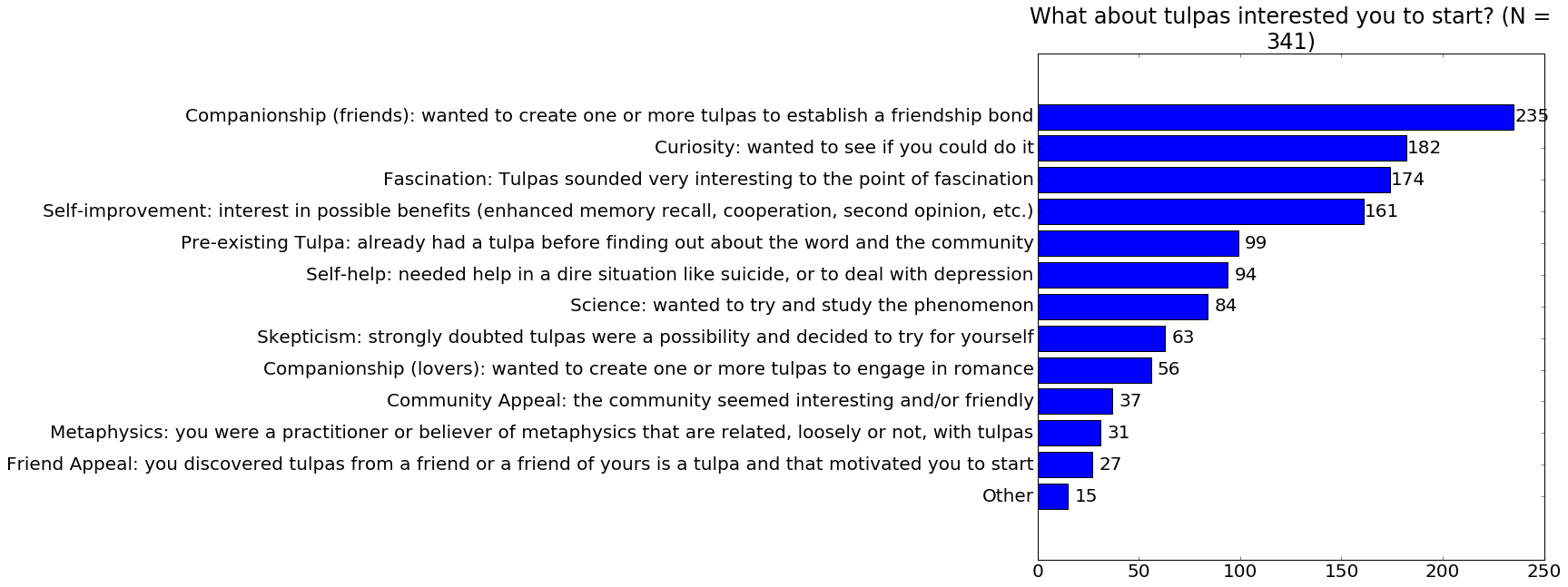
The proportion of naturals is remarkably high here; 30% of people had a tulpa before they came to the community. That number is consistent with a question later on — 'Was your first tulpa intentionally created, or natural?'. The overlap between the two is not complete: about 75% of people with natural tulpas had them before they found the community (although this may be spurious since the question is slightly ambiguous). Conversely about the same fraction of people who had tulpas before the community had natural tulpas — i.e., a quarter of them had intentionally created their tulpas outside of the community.
We could estimate the base rate of people with tulpas in the general population by combining the number of people with pre-existing tulpas who come to the community with a likelihood ratio — how much more likely someone with tulpas is to find out about the community than someone without. If people with pre-existing tulpas are, say, 10 times more likely to find out about the tulpa community, then the base rate of people having natural tulpas in the population is 30% / 10 = 3%. What the real likelihood ratio is isn't obvious to me.
One clue might be the following table, showing the data from 'How did you first find out about tulpas?' divided up into people who did and didn't have pre-existing tulpas:
| How did you find out? | Proportion (pre-existing tulpa) | Proportion (no tulpa beforehand) |
|---|---|---|
| Online research | 26% | 16% |
| Friends | 17% | 13% |
| Reddit/r/tulpas | 10% | 8% |
| 4chan | 9% | 15% |
| Reddit - another sub | 7% | 11% |
| Youtube | 6% | 7% |
| Creepypasta | 4% | 3% |
| My Little Pony Community | 3% | 7% |
| Tulpa.info | 3% | 2% |
| Other | 14% | 19% |
Aside from a larger proportion of naturals who found their way via their own research, the proportions are not tremendously different. This might indicate that the way people with pre-existing tulpas find the community isn't totally dissimilar to the way people without do, so the likelihood ratio isn't too high. It may also just be representative of how populated those places are, and how frequently tulpas are mentioned there; in which case it says nothing about the likelihood ratio, only that people with/without tulpas are distributed similarly over those places.